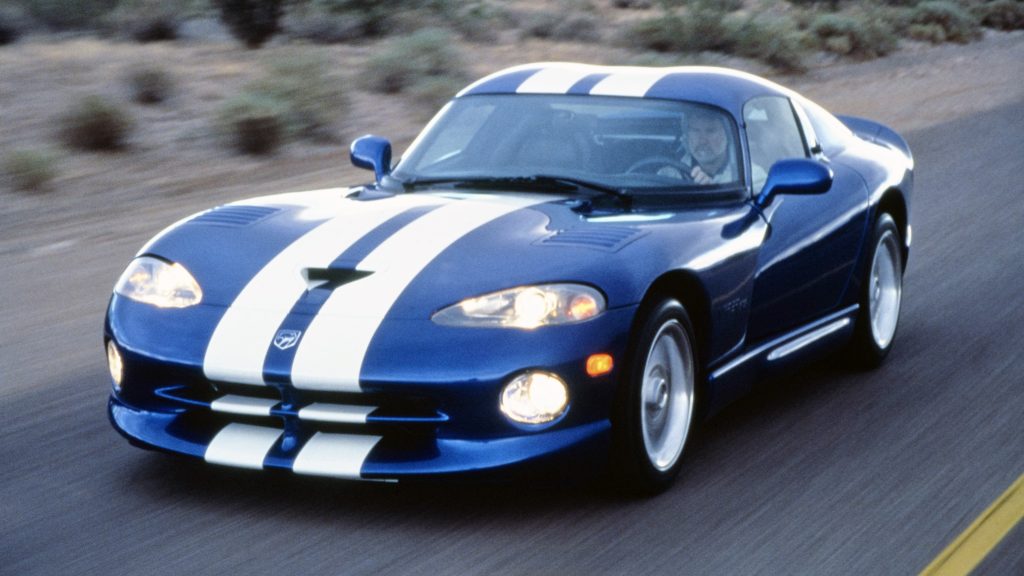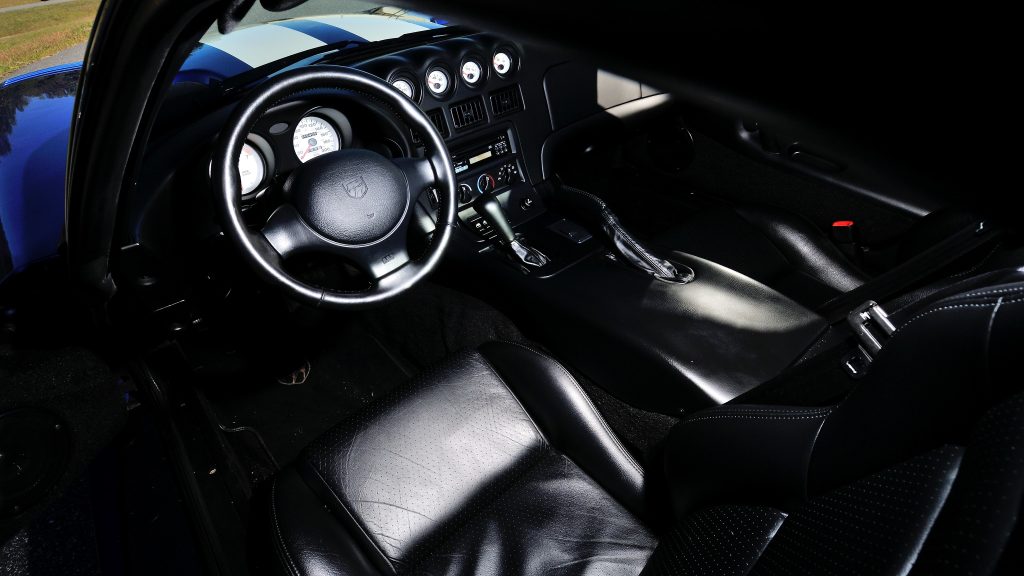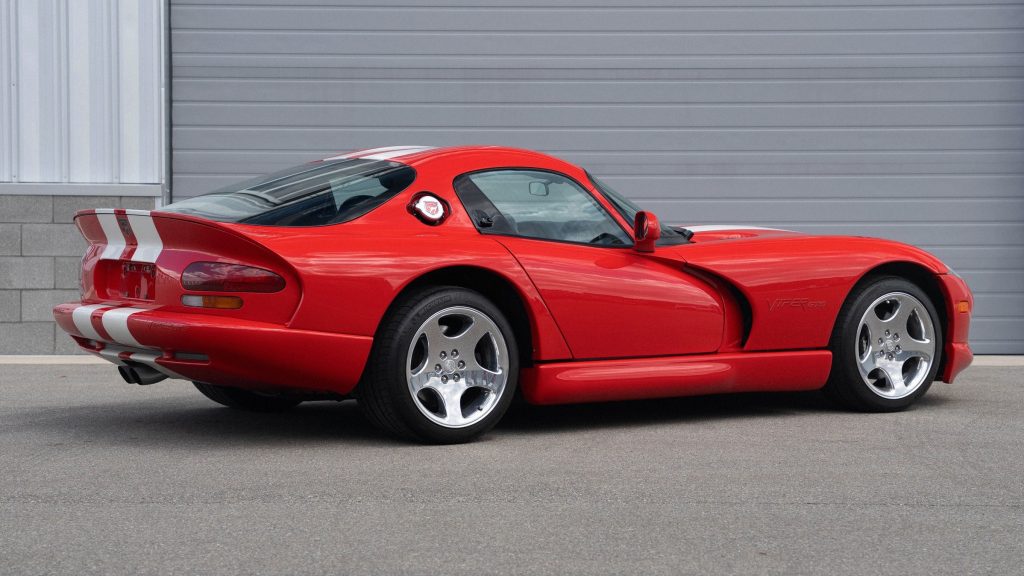If you grew up in the 1990s, it is likely that this car made part of your poster collection. Even though the regular model was a success, the Dodge Viper GTS took things up a notch. It introduced many important upgrades, including the coupé roof. The 8k-mile unit sold on Bring a Trailer this week gave us a great opportunity to reminisce about it.
Let’s start by the listing details: that specific GTS spent 25 years with its original owner until being resold. It has a clean Carfax report, brings original literature and comes in the iconic blue paint with white stripes. While the owner mentions some issues, there is nothing that harms its status of a true North-American hypercar. The auction ended at US$ 92,000.

What is the Dodge Viper GTS?
The SR II debuted in 1996 as a new generation, but the truth is that it was an update to the original Viper. The roadster became more efficient thanks to exhaust pipes relocated to the rear and some suspension parts made of aluminum instead of steel. The big news would only come later in the same year: the GTS version had finally gone into production.
Dodge added 35 hp to the famous V10 engine, now reaching 450 hp, and installed airbags on the car for the first time. Nevertheless, the biggest news was much easier to see: the coupé hardtop. Those elevated regions took inspiration in track cars, where they accommodate the drivers’ helmets. Fans did not take long to nickname it “double bubble”.
At the time of release, the GTS was employed as the Indianapolis 500’s pace car. An interesting point of its early history is that Dodge would only sell the new version in blue with white stripes during the first year; some other colors came over the next ones. Besides that, 1996 was the only year when those stripes ran through the license plate area.

Why was the GTS important?
More than giving the Viper a coupé version, Dodge upgraded the whole product. The rigid roof improved aerodynamics compared to the roadster’s to the point of reducing both drag coefficient and body weight while increasing body stiffness. The company also took the chance to update some other components so as to reduce weight even more.
Over the following years, both models received comfort and safety improvements that moved them away from the original no-frills character. On the other hand, not only did they keep complying with safety and market rules, but they also became more than quirky niche cars. The GTS helped make the Dodge Viper a world-class sports automobile.
The coupé body also led the Viper towards motorsport for the very first time. Dodge partnered with two racing teams to build the GTS-R, a race car actively used for over twelve years. The car had a growing success especially in endurance races, and eventually had many victories in the 24 Hours of Le Mans. It made room to newer cars in the mid-2000s.

While that Viper has already been resold, you can always look for similar units online. Now, after reading this article, you will certainly give the GTS a closer look. You will be able to identify the improvements it received over time and even spot specific features, such as the stripes on the red unit above. Perhaps the next winning bid will be yours!
Danillo Almeida has explored his passion for cars in two distinct ways. The first one is his graduation course in Mechanical Engineering, which will hopefully lead to a job position in the field. The other one is expressing his knowledge and opinions on the matter through writing. Almeida has already contributed to blogs, stores, and websites in general writing automotive content in many formats.





